Table Of Contents
A Version control system (VCS) helps you manage changes to documents and programs.
This goes beyond using Track Changes in Microsoft Word. For example, you can revert to older versions of a LaTeX document or
program written in Stata, SAS, or R. With a distributed version control
system (DVCS), you can track changes to all your documents and programs while collaborating with coauthors.
Bitbucket offers for free an unlimited number of private repositories with up to 5 collaborators.
If you authorize an academic (*.edu) email account you get unlimited contributors! A popular alternative is
Github, but since Github does not offer free private repositories (and keeping your research private
is important!) we will use Bitbucket. Bitbucket makes use of two DVCSs:
Mercurial (Hg) and Git. We’ll be using Git for this tutorial,
but you could use Mercurial instead if you prefer (intro to working with Mercurial). To make using git
(and hg) a breeze, we will be using SourceTree, the free tool by Atlassian (makers of Bitbucket).
Using a DVCS allows you to link a repository to the documents on your local machine. This repository will allow you to track
changes to your documents and keep a record of your document history. To see how this system works. This tutorial will trace the
following steps:
- Set up a project folder with a basic LaTeX file.
- Set up a Bitbucket account.
- Install SourceTree.
- Create a
gitrepository using SourceTree. - Make a change to our LaTeX file.
- Summarize basic features for reviewing changes.
Part 2 of this tutorial will cover connecting this repository to a Bitbucket.org repository to put the D in DVCS and take a look at collaborating with coauthors.
Step 1: Setup LaTeX file
- Create a new LaTeX file named “itn.tex”.
- Place this file in a folder that will only be used for this project.
- Place the following sample text in the file and save it.
\documentclass{article}\title{International Trade Network}\author{Jonathan Page}\begin{document}\maketitle{}\section{Introduction}Careful analysis of the topology of the international trade network (ITN) is necessary in order toidentify stylized facts which a theoretic network model of international trade should be able to replicate.Properties of networks are tightly related to the relevant network formation process. Determining the mostappropriate network formation process can provide depth to related empirical analysis.\end{document}
Step 2: Setup a Bitbucket account
Go to bitbucket.org and sign up for a new account (if you don’t already have one).
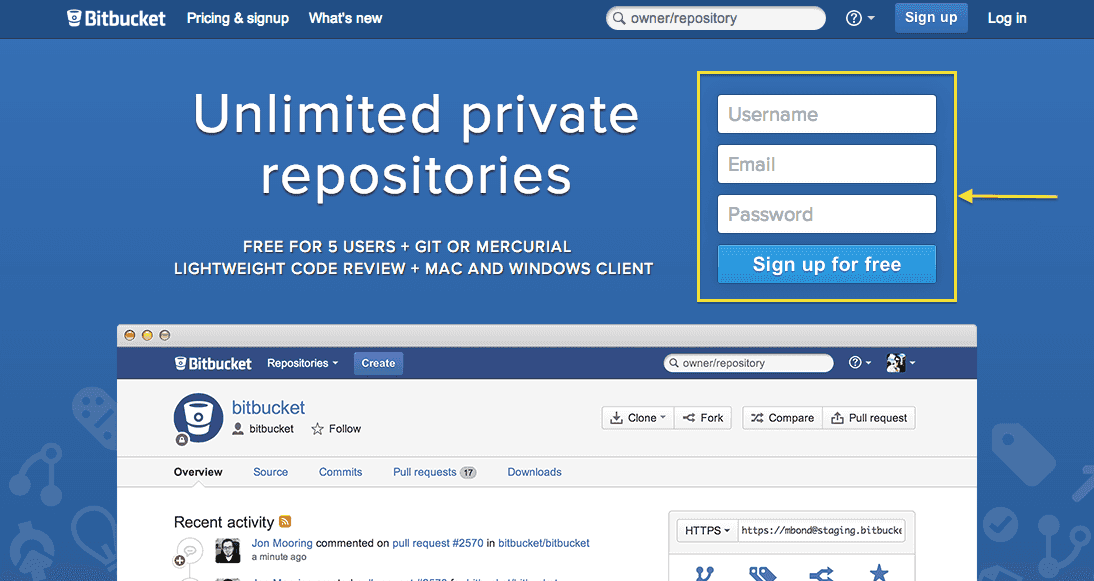
Step 3: Install SourceTree
Go to https://sourcetreeapp.com/ and click the large “Download SourceTree Free” button in the
middle of the page. Your button may appear different if you are using Windows.
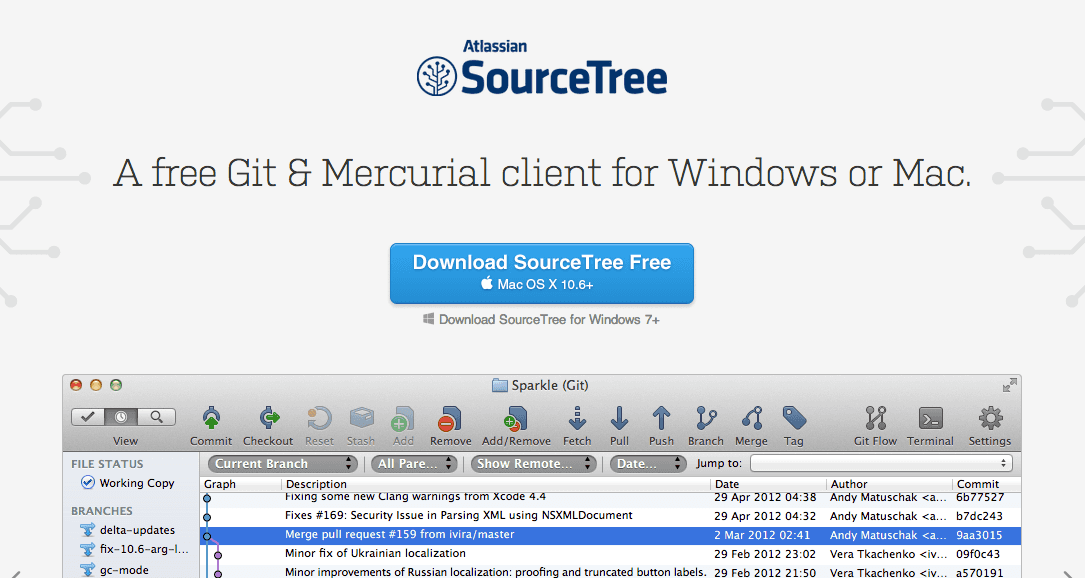
dmg file and drag the
SourceTree application to your Applications folder.
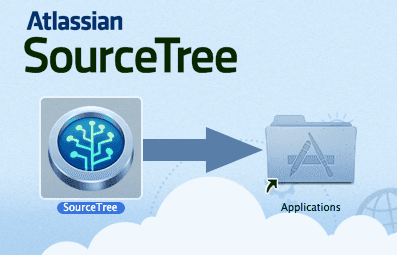
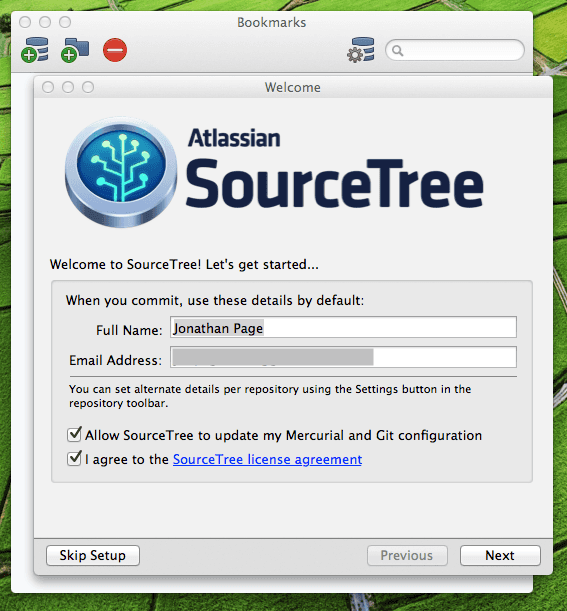
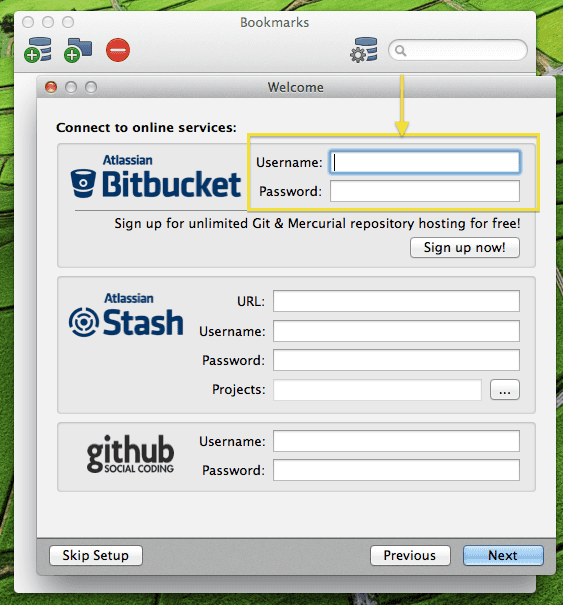
Step 4: Setup your repository
Open finder and find the folder that contains your LaTeX file. Drag this folder onto the SourceTree application window.
This will open the following dialog.

Add “itn.tex” to the staging area
Double-click the project to open the project view. Click “Add” to add all files in the folder to the repository.
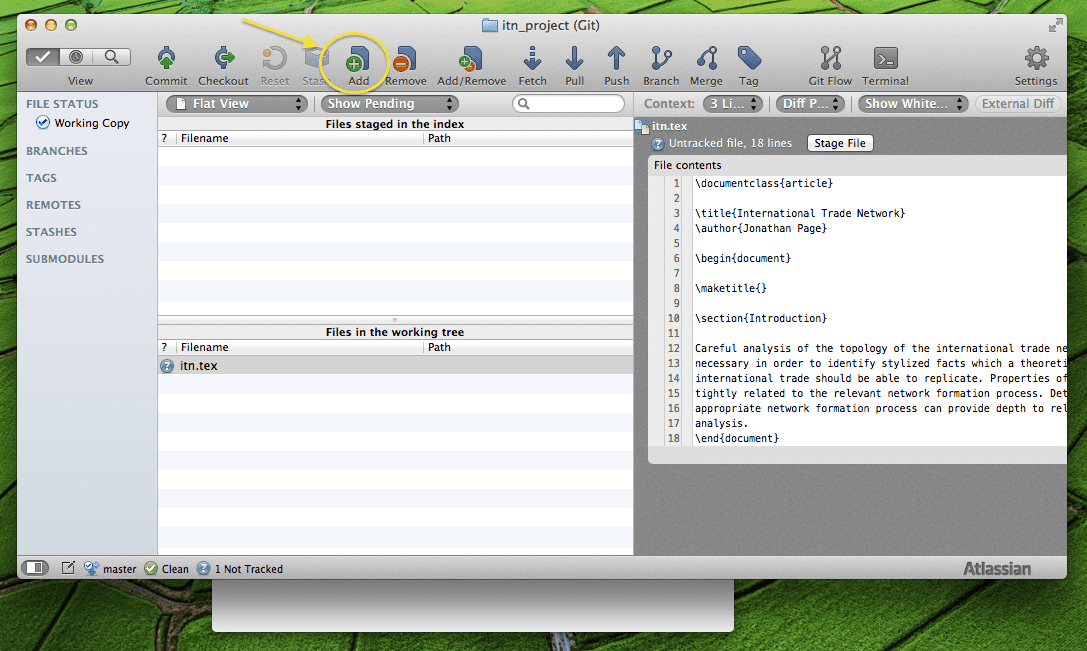
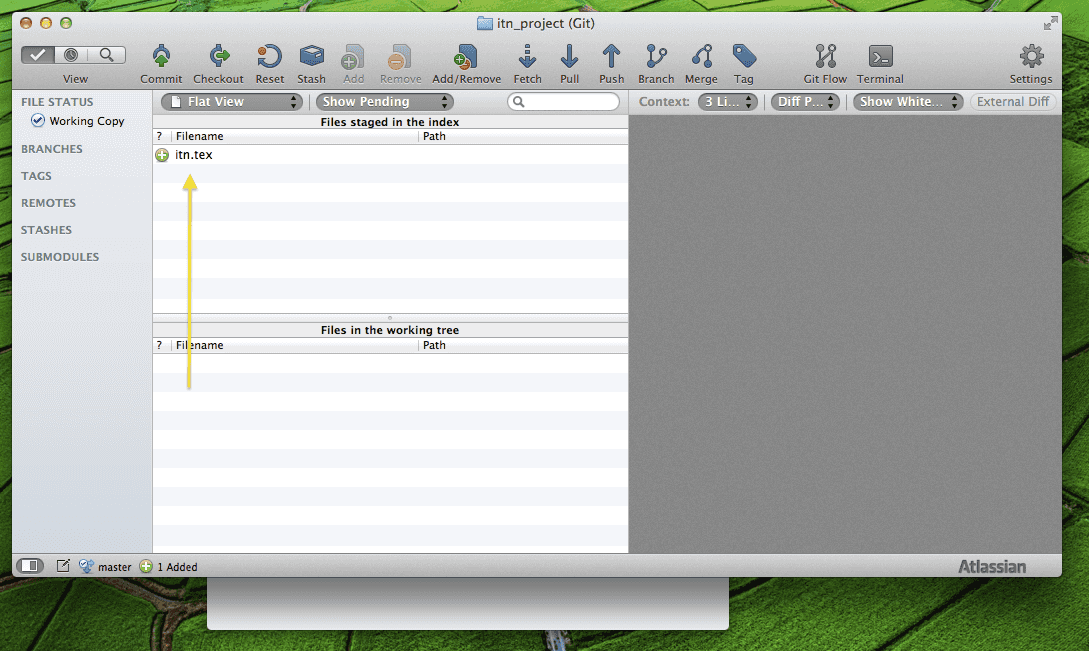
Commit to initialize the repository
Press the “Commit” button.

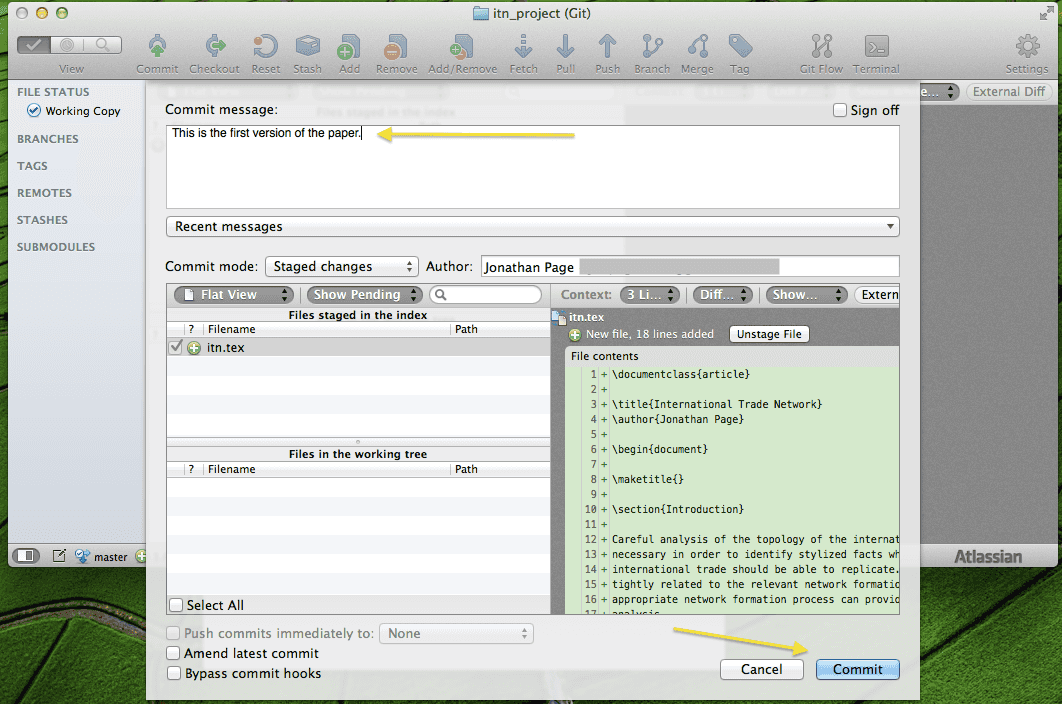
Step 5: Making a change to the LaTeX file
Now we want to see how this version control system deals with changes. Add the following paragraph to “itn.tex”:
In the analysis of international trade as a network phenomenon, we must answer the question of how the networkstructure is determined. More precisely, if we assume the network structure is given to us exogenously, ouranalysis will focus on the game played on the given network. If, however, the formation of the network structure isendogenous, our analysis must broaden to consider the formation process. This survey focuses on what informationthe network itself can provide regarding the formation process.
Save “itn.tex”. Open the SourceTree application. Notice that “itn.tex” now has a new icon beside it to indicate it has been
changed. 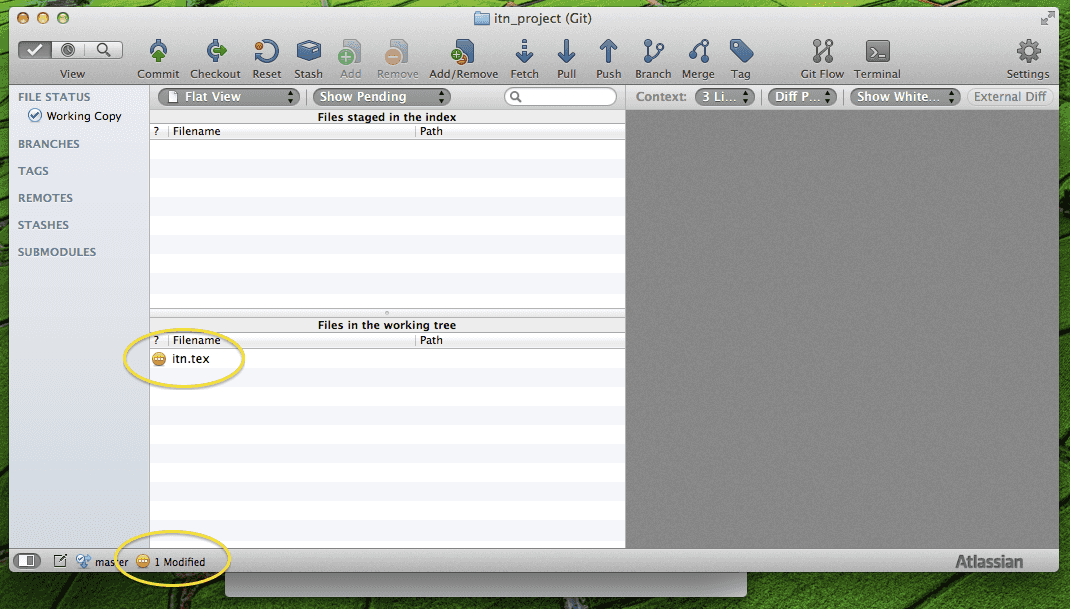
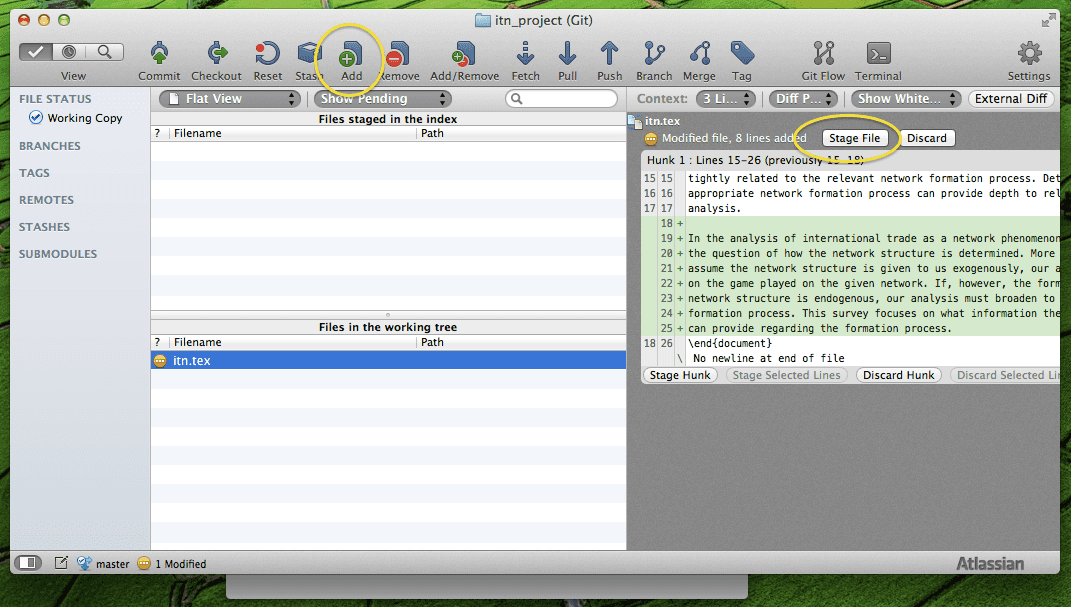
Step 6: Viewing your history
Click the clock symbol to view the log. 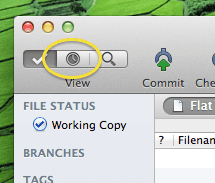
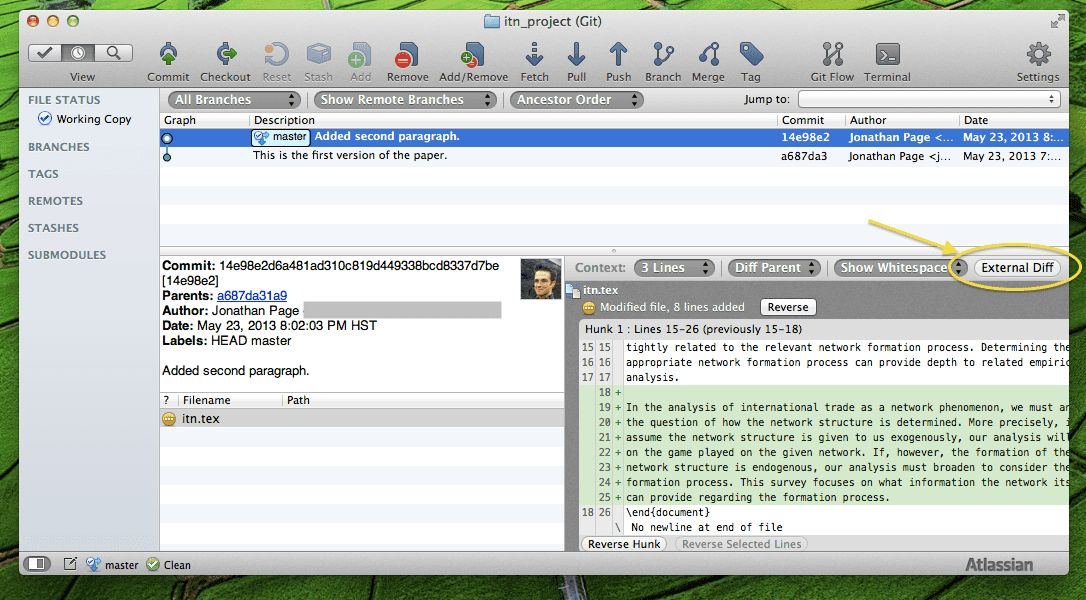
Next Steps
We’ve covered quite a bit here, but there is much more to learn. Though our example worked with a LaTeX source file, you
could follow the same process with any filetype. In fact, version control systems were developed with programmers in mind.
As a result this is the perfect way to manage your source files for Stata, SAS, R, Python, HTML, etc. Here are a few git
resources to get you started:
- In-depth
gittutorial - SourceTree questions (with answers) on StackOverflow
gitquestions (with answers) on StackOverflow
Be sure to check out the next part of this tutorial as we connect our repository to the Bitbucket site and collaborate with a coauthor. Any tips or nagging questions? I would love to hear them!
Share
0 Comments
Related Posts
Quick Links
Legal Stuff
Social Media
